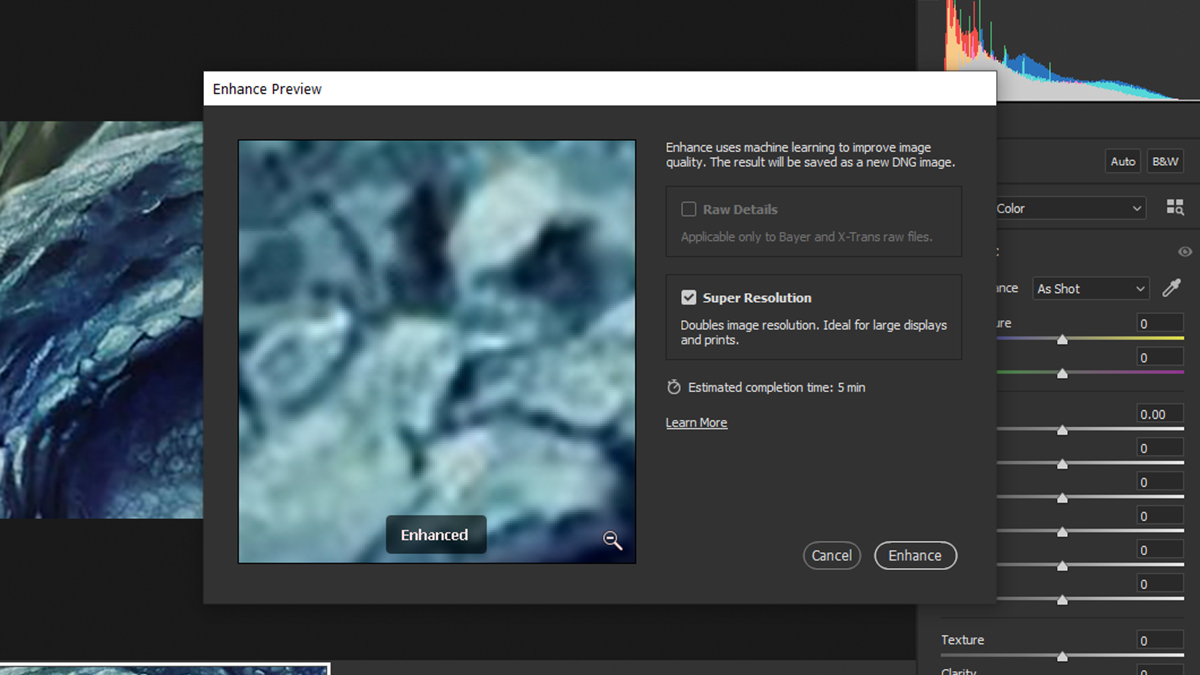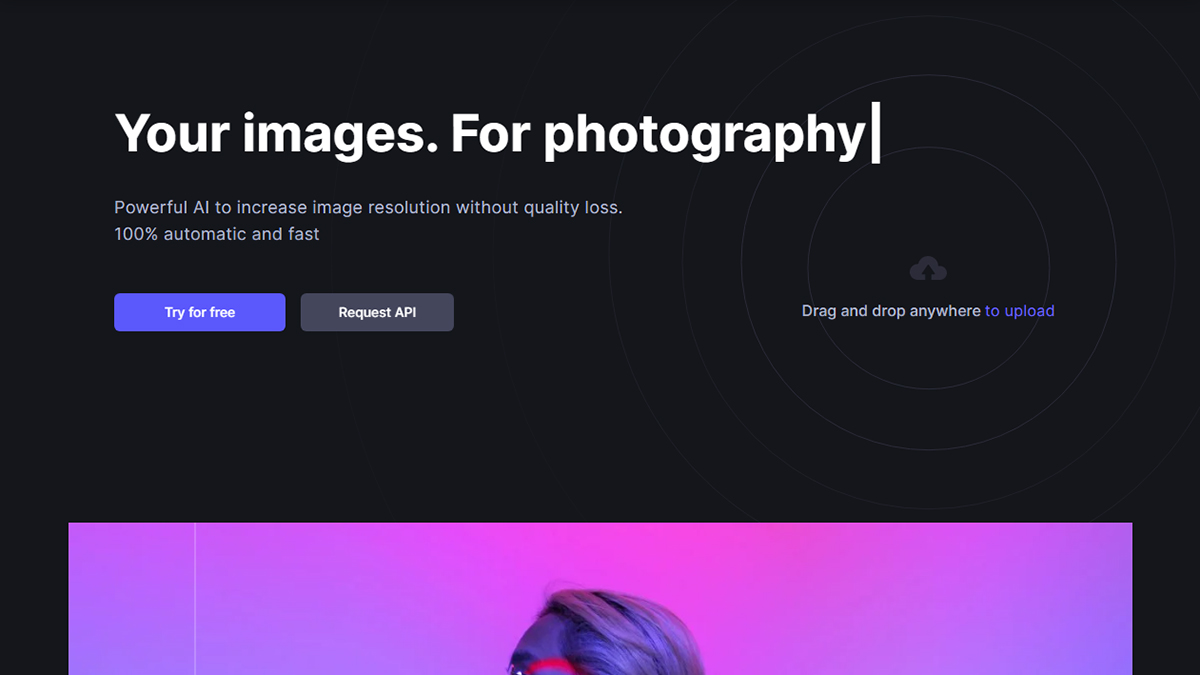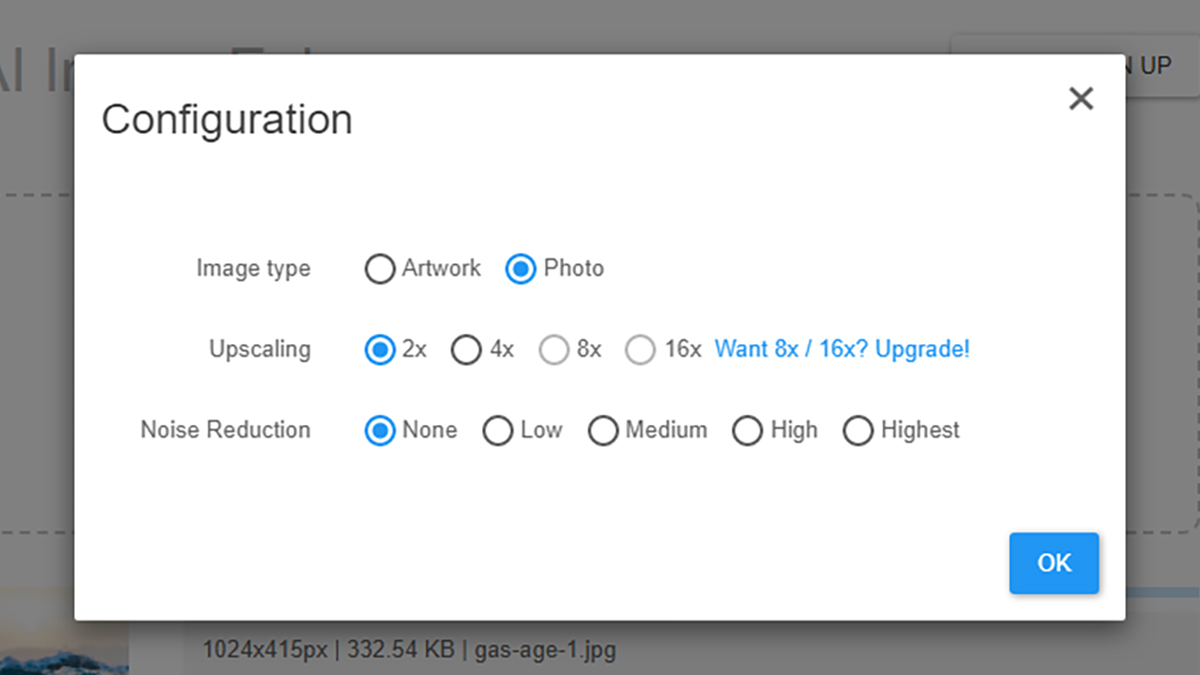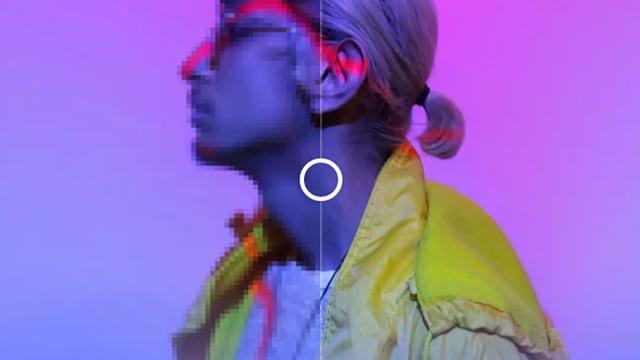If you’re trying to enlarge a digital image, or zoom in on a particular part of it, the picture can get pretty pixelated pretty fast. Image editors can’t magically insert data that wasn’t captured in the first place…or can they? The latest in artificial intelligence algorithms promise to smartly fill in details to avoid jagged edges and artifacts.
These algorithms work like many others, deploying machine learning to work from millions of samples to figure out what should be filling in the gaps as you make a picture bigger (or tightly crop it). It’s not magically producing parts of an image that aren’t there, but rather taking a clever guess as to what they might look like.
This type of technology is in the headlines again with the arrival of Super Resolution from Adobe, which is available through Photoshop and Lightroom for Creative Cloud subscribers. It’s able to “intelligently enlarge photos while maintaining clean edges and preserving important details” Adobe says. Here’s how you can use it — or if you’re not an Adobe customer, here are some alternatives you might want to check out.
Adobe Super Resolution

Super Resolution is actually a feature of the Adobe Camera RAW (ACR) tool for processing RAW images — files that include all the available data from a camera sensor, not just what your device has decided to keep. It’s technically separate from Photoshop, but Photoshop supports it and uses it by default for RAW files, and it’s what Lightroom is built on top of.
If you have an active Creative Cloud subscription that includes Photoshop and Lightroom, you’ve got three ways to get to ACR: Open a RAW file in Photoshop, right-click on a non-RAW image in Adobe Bridge, and choose Open in Camera Raw (which opens it in ACR mode in Photoshop), or open any image in the Develop module in Lightroom. At the time of writing, Super Resolution hasn’t rolled out to Lightroom, but it should arrive soon.
With the image open, it’s then just a matter of right-clicking on it, choosing Enhance, and then ticking the box marked Super Resolution. You’ll see a preview of how the upscaling will work (click on the window to toggle the before and after views), and an estimate of how long it’s going to take. If you’re happy, click Enhance. There are no options to set, because the file is simply quadrupled in size.

You’ll find a duplicate file next to the original in whatever folder you opened it from, in the DNG format, and that new file will be twice the vertical resolution and twice the horizontal resolution of the one you started with (up to a maximum resolution of 500 megapixels). Zoom into the details of the new image and see if you can spot the differences.
The quality of the results will vary from picture to picture — the more data Super Resolution has to work with at the start, the better the end results are going to be — but most of the time the enhanced image is going to look much better than it would if you had simply boosted the size through the normal tools in Photoshop.
According to Adobe, the new Super Resolution feature (which works in addition to the current Raw Details improvements that sharpen edges and improve detail) is particularly suitable for images that you’ve previously had to crop. It’s also worth noting that you can’t apply Super Resolution to the same image twice — you can’t enhance a picture that’s already been enhanced.
Other image enhancers

Adobe isn’t the only company working on this type of technology, although it’s fair to say that most developers want some kind of financial return on their super-image-enhancement processes, which means it’s not the sort of feature that you’re going to stumble across in a free image editor very often.
Let’s Enhance sells its AI-powered image-upscaling technology to professionals, businesses, and developers, but it also allows anyone to try it out for free. Click the appropriately labelled Try for free button on the homepage, or just drag and drop an image anywhere on the target on the right of the page to get started.
Unlike Adobe Super Resolution, you do get a choice of how much bigger your images become, and you can access different settings depending on whether you’re processing digital photos or digital art. Tone and colour enhancements are available, too, and you can process up to 5 images for free to check the results before you’ll have to pay.

The Let’s Enhance model is replicated by several other services, so you’ve got plenty of options to test out in your hunt for a suitable app to enlarge your pictures. Deep-Image has the same restrictions for free users as Let’s Enhance, so you can process five images for free in return for signing up for a free account, and the resizing options are 2x, 3x or 4x.
AI Image Enlarger is part of a bigger suite of AI-powered image enhancement tools, and once you’ve signed up for a free account you can process eight images without paying, as long as they’re 1200 x 1200 pixels or smaller, and under 5MB in size. If you do pay then you get a lot more flexibility, and batch process options.
Then there’s the identically named but different AI Image Enlarger, which doesn’t require you to even register an account to process a photo or two (it’s actually focused mainly on enlarging digital artworks, but photos can be processed, too). If you do decide to register and start paying up, you can process bigger files at greater speeds and with greater reliability.
